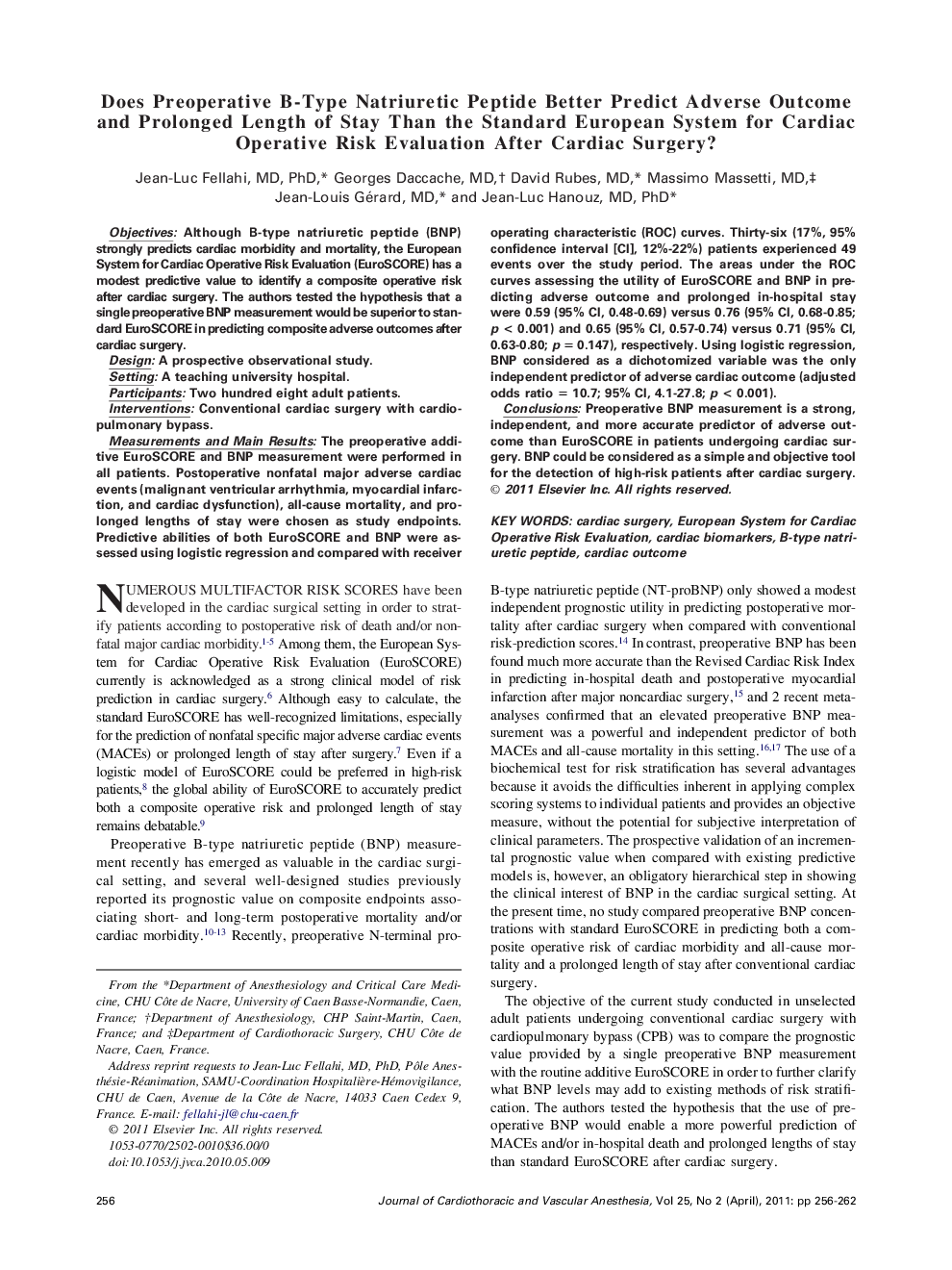| Article ID | Journal | Published Year | Pages | File Type |
|---|---|---|---|---|
| 2761420 | Journal of Cardiothoracic and Vascular Anesthesia | 2011 | 7 Pages |
ObjectivesAlthough B-type natriuretic peptide (BNP) strongly predicts cardiac morbidity and mortality, the European System for Cardiac Operative Risk Evaluation (EuroSCORE) has a modest predictive value to identify a composite operative risk after cardiac surgery. The authors tested the hypothesis that a single preoperative BNP measurement would be superior to standard EuroSCORE in predicting composite adverse outcomes after cardiac surgery.DesignA prospective observational study.SettingA teaching university hospital.ParticipantsTwo hundred eight adult patients.InterventionsConventional cardiac surgery with cardiopulmonary bypass.Measurements and Main ResultsThe preoperative additive EuroSCORE and BNP measurement were performed in all patients. Postoperative nonfatal major adverse cardiac events (malignant ventricular arrhythmia, myocardial infarction, and cardiac dysfunction), all-cause mortality, and prolonged lengths of stay were chosen as study endpoints. Predictive abilities of both EuroSCORE and BNP were assessed using logistic regression and compared with receiver operating characteristic (ROC) curves. Thirty-six (17%, 95% confidence interval [CI], 12%-22%) patients experienced 49 events over the study period. The areas under the ROC curves assessing the utility of EuroSCORE and BNP in predicting adverse outcome and prolonged in-hospital stay were 0.59 (95% CI, 0.48-0.69) versus 0.76 (95% CI, 0.68-0.85; p < 0.001) and 0.65 (95% CI, 0.57-0.74) versus 0.71 (95% CI, 0.63-0.80; p = 0.147), respectively. Using logistic regression, BNP considered as a dichotomized variable was the only independent predictor of adverse cardiac outcome (adjusted odds ratio = 10.7; 95% CI, 4.1-27.8; p < 0.001).ConclusionsPreoperative BNP measurement is a strong, independent, and more accurate predictor of adverse outcome than EuroSCORE in patients undergoing cardiac surgery. BNP could be considered as a simple and objective tool for the detection of high-risk patients after cardiac surgery.
